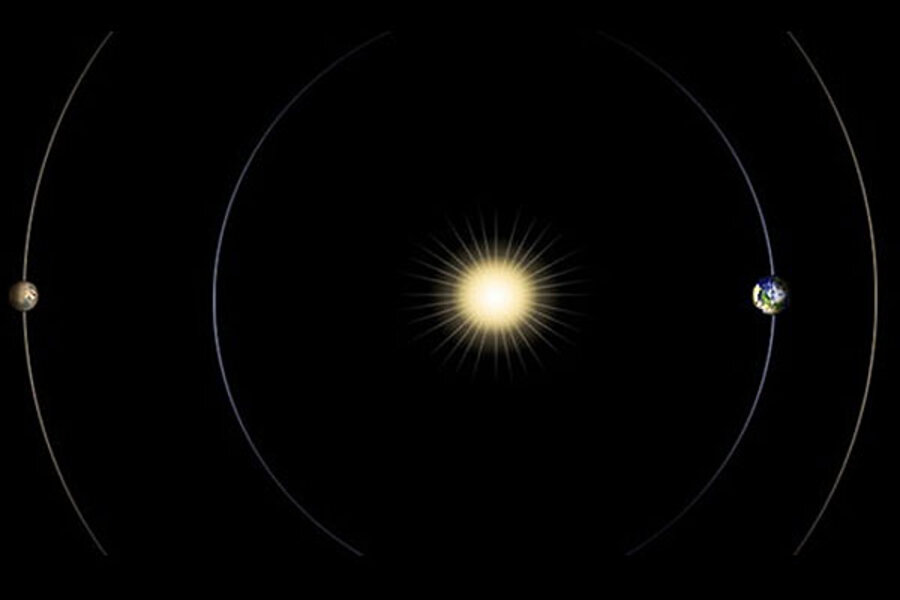Communication with Mars to go silent for a month
Loading...
An unfavorable planetary alignment will force NASA's fleet of robotic Mars explorers to be a lot more self-sufficient next month.
Mission controllers won't send any commands to the agency's various Mars spacecraft for much of April, because the sun will lie between Earth and the Red Planet during that time. Our star can disrupt and degrade interplanetary communications in such an alignment, which is known as a Mars solar conjunction, so spacecraft handlers won't take any chances.
"Receiving a partial command could confuse the spacecraft, putting them in grave danger," NASA officials explain in a video posted Tuesday (March 19) by the agency's Jet Propulsion Laboratory (JPL) in Pasadena, Calif.
Transmissions from Earth to the Mars rover Curiosity are slated to be suspended from April 4 to May 1, officials said. No commands will be sent to Curiosity's older rover cousin Opportunity or NASA's Mars-orbiting craft — Mars Odyssey and the Mars Reconnaissance Orbiter (MRO) — from April 9 to April 26.
Both rovers will continue to do stationary science work throughout the conjunction period, relying on commands sent up to them beforehand. [How NASA Deals with a Mars Solar Conjunction (Video)]
"We are doing extra science planning work this month to develop almost three weeks of activity sequences for Opportunity to execute throughout conjunction," Opportunity mission manager Alfonso Herrera of JPL said in a statement.
MRO and Mars Odyssey will continue science observations as well, though on a more limited basis. The orbiters will also continue their role as rover communication links, receiving data from Opportunity and Curiosity.
Odyssey will send information — its own observations and the rovers' data — Earthward throughout the conjunction period, though the mission team anticipates some dropouts, so Odyssey will send the data again later as needed.
MRO will take a different tack, storing everything from April 4 until after conjunction. The spacecraft's operators estimate it will have about 52 gigabits of data onboard when it's cleared to transmit to Earth again on May 1.
Mars solar conjunctions occur every 26 months, so all of the spacecraft have dealt with them except Curiosity, which landed on the Red Planet last August. Opportunity has been through five conjunctions since arriving on Mars in January 2004, but Odyssey is even more experienced.
"This is our sixth conjunction for Odyssey," Chris Potts of JPL said in a statement. Potts is mission manager for Odyssey, which has been orbiting Mars since 2001. "We have plenty of useful experience dealing with them, though each conjunction is a little different."
Follow Mike Wall on Twitter @michaeldwall. Follow us @Spacedotcom, Facebook or Google+. Originally published on SPACE.com.
- Amazing Mars Rover Curiosity's Martian Views (Latest Photos)
- Mars Explored: Landers and Rovers Since 1971 (Infographic)
- Photos From NASA's Mars Reconnaissance Orbiter
Copyright 2013 SPACE.com, a TechMediaNetwork company. All rights reserved. This material may not be published, broadcast, rewritten or redistributed.







